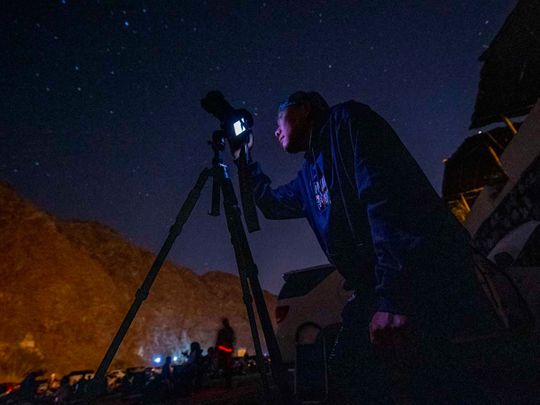
2023 is set to be a fantastic year for stargazers. Some of the brightest planets in our solar system are going to have close encounters with one another, while others are going to move across some remarkable star clusters.
Click start to play today’s Crossword and spot an eclipse.
Here are a few stargazing events you can’t miss, this year:
1. January 22: Venus meets Saturn
The brightest planet in our galactic neighbourhood, Venus, will become easier to see as it climbs higher in the sky every evening. Meanwhile, Saturn, which started off the year higher in the sky, will drop closer to the horizon. On January 22, both planets will appear to brush past each other – they’ll be less than half a degree apart! On the next night, the planetary pair will be joined by a slender crescent moon, for a spectacular sight.
2. March 1: Meeting of the brightest planets
Venus and Jupiter will slowly converge over the next few months, to finally make their closest approach to one another on the evening of March 1. Passing within half a degree, the two disk-shaped orbs will be close enough to observe in the same field of view, even from the smallest backyard telescope!
3. April 21: Venus and the neighbourhood constellations
The Pleiades star cluster, also known as the Seven Sisters, is a dipper-shaped gem in Taurus the Bull constellation. Venus will guide you to it, while meeting the larger, V-shaped Hyades star cluster, with its bright red Aldebaran star, along the way. Add to all this, a waxing crescent moon, and it’s a night sky full of stellar treasures on April 21.
4. August 12: Perseid meteor shower
As one of the most spectacular annual meteor showers, the Perseids generate up to 60 shooting stars per hour, according to the National Geographic website. In mid-August, the Earth is set to slam into a cloud of small debris – the remains of a comet – which will produce a flurry of shooting stars, as each little meteor disintegrates in the Earth’s atmosphere. These natural fireworks can be viewed with the naked eye – just try to find a viewing spot with as little light pollution as possible.
5. October 14: Partial solar eclipse
The sun, moon, and Earth are on the way to almost perfectly align on October 14. The partial solar eclipse will turn into an annular eclipse for a few moments – this happens when the moon passes across the interior of the sun’s face, forming a blinding ring, called the ‘ring of fire’. It’ll then become a partial eclipse again, before the moon sweeps away from the sun and resumes its journey, leaving us in awe of the phenomenon.
Will you be stargazing this year? Play today’s Crossword and let us know at games@gulfnews.com.








